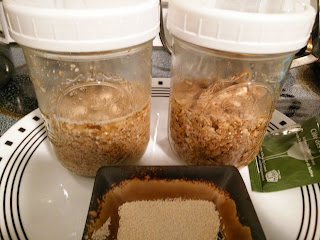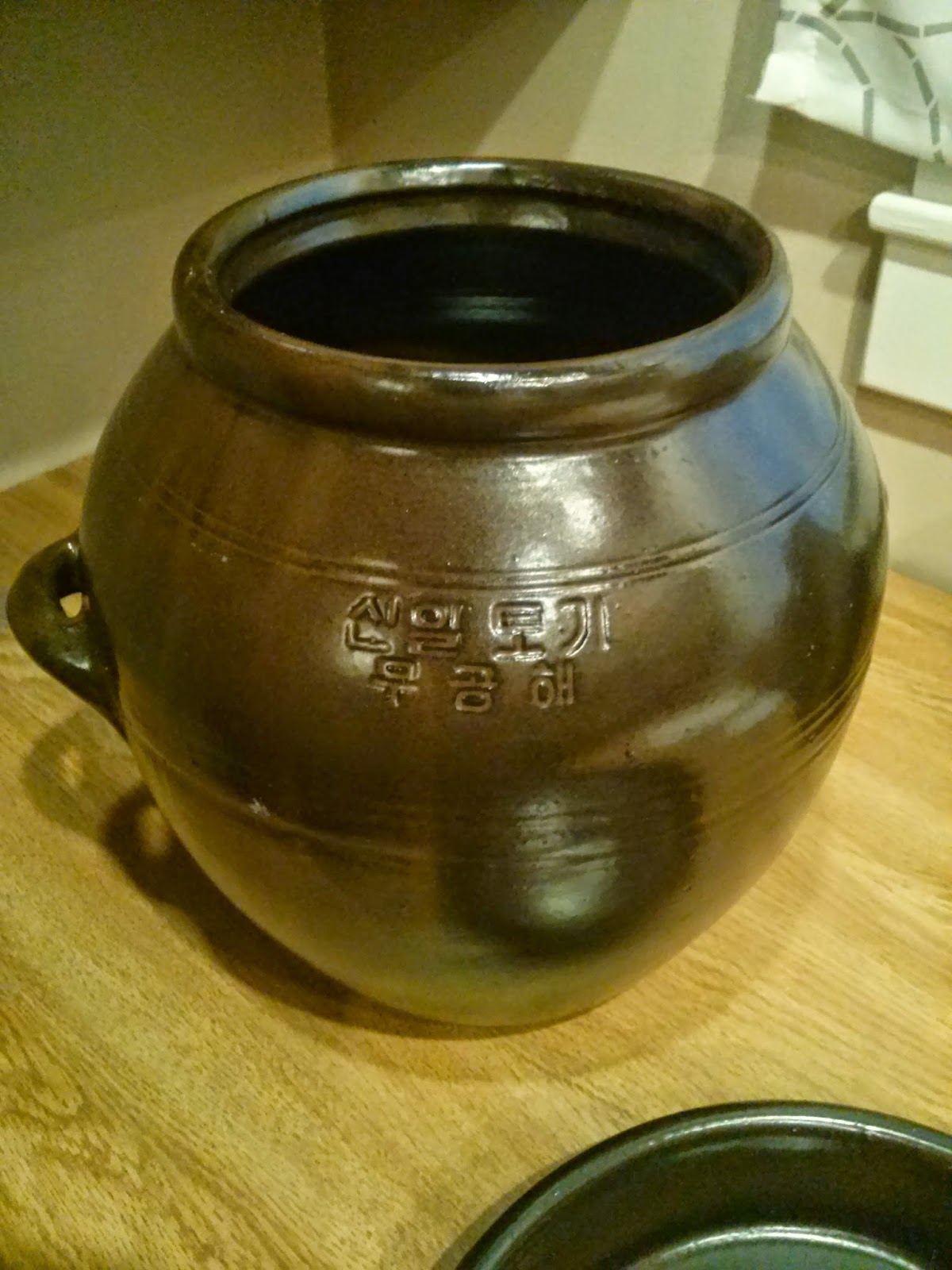Spring Makgeolli Making
I've made two batches this spring. One triple-feed, and one single-feed makgeolli.
For the triple-feed I followed the recipe for Samyangju. Since it was the spring, temperatures were increasing and I didn't need to rely on my electric heating pad to keep the makgeolli at 25 C while it fermented. Hooray!
On the flip side, warmer temperatures can mean a higher chance to develop unwanted mold growth on the surface of the makgeolli. Boo!
If you are brewing in a warmer climate, make sure to clean your tools well.
Also, the warmer temperatures increase metabolic rate of the microorganisms present in the makgeolli. As such, a batch that may originally take 5-7 days in colder temperatures may only take 3-5 days.
When I tasted the fresh samyangju, I didn't like it very much. There were some extra pieces of sediment that passes through the filter and left a grainy feeling. I bottled the remainder and placed it in the refrigerator.
A month later someone requested to try the homemade samyangju, so I opened it up and poured enough for a taste into a glass.
It was great! Much better than before. The time ageing in the refrigerator helped improve the taste as well as the feel. The particles which previously left a grainy feeling on my tongue had dissolved. The result was a smooth, milky samyangju.
The second batch was a single-feed with about 70% brown rice (현미) and 30% white rice (찹쌀).
This batch was made right on the cusp of summer, so the temperature averaged pretty high during the whole process (about 25-28 C).
The brew was about 3.5 days, and the product was a slightly bitter makgeolli with a nice, smooth texture. I bottled this most recent batch and it has been ageing in the refrigerator since.
For the triple-feed I followed the recipe for Samyangju. Since it was the spring, temperatures were increasing and I didn't need to rely on my electric heating pad to keep the makgeolli at 25 C while it fermented. Hooray!
On the flip side, warmer temperatures can mean a higher chance to develop unwanted mold growth on the surface of the makgeolli. Boo!
If you are brewing in a warmer climate, make sure to clean your tools well.
Also, the warmer temperatures increase metabolic rate of the microorganisms present in the makgeolli. As such, a batch that may originally take 5-7 days in colder temperatures may only take 3-5 days.
When I tasted the fresh samyangju, I didn't like it very much. There were some extra pieces of sediment that passes through the filter and left a grainy feeling. I bottled the remainder and placed it in the refrigerator.
A month later someone requested to try the homemade samyangju, so I opened it up and poured enough for a taste into a glass.
It was great! Much better than before. The time ageing in the refrigerator helped improve the taste as well as the feel. The particles which previously left a grainy feeling on my tongue had dissolved. The result was a smooth, milky samyangju.
The second batch was a single-feed with about 70% brown rice (현미) and 30% white rice (찹쌀).
This batch was made right on the cusp of summer, so the temperature averaged pretty high during the whole process (about 25-28 C).
The brew was about 3.5 days, and the product was a slightly bitter makgeolli with a nice, smooth texture. I bottled this most recent batch and it has been ageing in the refrigerator since.



Comments
Post a Comment